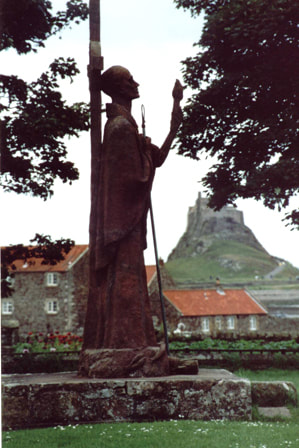 In Monty Python’s Life of Brian, there is a powerful scene where a revolutionary sect asks, “What did the Romans ever do for us?” Recognition slowly dawns that the answer is actually “quite a bit!” When we truthfully explore the origins of the Ecclesia Anglicana we face similar acknowledgement for there are several influential strands which typically sit in paradoxical tension with one another. In our understanding of Anglican history, we do well therefore to be open to ‘both/and’, rather than ‘either/or’ perspectives. This is certainly apposite to the enduring influence of both ‘Roman‘ and ‘Celtic’ forms of early Christianity. Sometimes juxtaposed as two competing elements, each continues to shape the nature and dynamics of Anglican spirituality in distinct, but also complementary, ways. Indeed, recent scholarship even questions the terms ‘Roman’ and ‘Celtic’ (some preferring ‘Insular’ to ‘Celtic’) as a designator. It points out that the various early British and Irish Christian traditions were closely linked, rather than a simple, coherent, entity. Nor were ‘Celtic’ Christians isolated from others, as if in a form of spiritual Brexit (a problem with the alternative designation ‘Insular’). For, as Patrick Wormald put it: “One of the common misconceptions is that there was a Roman Church to which the Celtic Church was nationally opposed” in some rigid sense. Nonetheless, if we are generally wise to use inverted commas, historically they reflect enduring creative tensions between the local and universal, between Christ and culture, and between different emphases in mission, prayer and order. Appreciating this rich mosaic more fully enables greater depth in our vocation and spiritual life today..
0 Comments
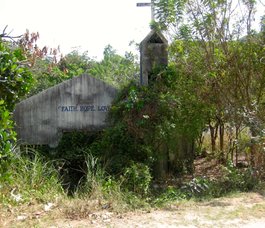 It has been good to contribute recently to a number of faith-based initiatives which are seeking to engage constructively with ecological challenges. Edited by the excellent Dr Clive Ayre, one of the Australian leading thinkers in this field, the latest journal of the Australian Association of Mission Studies is for example focused on these issues. It was an honour therefore to contribute some of my thinking and experience of the, often disconnected, relationships between Reconciliation, Ecology and Mission, particularly positively in relation to local projects in Queensland. It has also been good to hear of planning for the first national conference (this September) of the Australian Religious Response to Climate Change (ARRCC) and to begin to link up more closely with that work in which I shared in Sydney. Meanwhile the Anglican Board of Mission (ABM) has been moving forward with its own climate change awareness and advocacy, on behalf of Australian Anglicans as a whole. Some of its work and plans can be found here, including an article I was pleased to contribute from my experience in the Philippines and eco-theological studies. The article itself is also to be found below (just click "Read More"). All these things seem such small steps but together, by God's grace, we can make a difference... 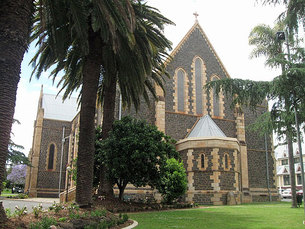 To rework a common saying, if something doesn't quite look or quack like a duck, perhaps it is not a duck. There are no doubt many reasons why the Anglican Parish of St Luke has not always flourished as well as it might have done. Yet key may the very identity of its principal worship site (St Luke’s). This is situated on two major city thoroughfares of Ruthven Street (the main north-south route through Toowoomba) and Herries Street (which links key city institutions such St Vincent Hospital & Toowoomba Grammar School with The Glennie School). It faces the City Council chambers which are mere yards away diagonally. It has traditionally hosted many wider civic and city events. Local people outside the church congregation also frequently and instinctively call St. Luke’s a Cathedral. Yet its city centre significance and ‘more than ordinary parish’ identity has not always been well grasped. Linked with other worship centres with different dynamics, it has felt further dislocating pulls of theological, pastoral and missional orientation. As Toowoomba grows each day towards being a genuine regional capital, and as the wider Church wrestles with today’s mission priorities, it is therefore appropriate to ask: ‘is it time for the St Luke’s site to be regarded, supported and developed as a form of Minster?...  Laying the foundations of a labyrinth at St Luke’s has been a beautiful symbol of our parish journey together. For we are named after someone – St Luke – who wrote the Gospel of Luke and the Acts of the Apostles to encourage us to see our life and faith as a journey into the heart of God and a journey into deeper relationship with all those around us. Like the first disciples on the Emmaus Road, we are called to experience God in Jesus Christ as we travel with our parish vision: to be more deeply ‘focused in Christ, joyful and inclusive, compassionate in witness’. Over the last few months we have been praying and reflecting together about the next steps we should take. It has been a very positive experience. For we have begun to discover new pathways building on our current strengths and shared Christian traditions. We have identified a MAP (short for Mission Action Plan) which we hope and trust will help us walk forward together over the next 3 years. Unlike the final stage of the labyrinth, it will not be fixed in stone. Some things will work. Some things will not. Other surprises will come our way. Yet our MAP will help us from straying from the pathway, helping us better attention to God’s love among us. in both our inward and outward looking journeys. There are six aspects to our MAP, like the six petals at the centre of our labyrinth. By far the highest priority identified by members of the parish is developing our ministry with younger people, children & families (including seeking a new paid member of staff to guide and support us). Alongside this is a second priority of engaging with the new Pilgrim course – for existing and new members of our parish to grow as Christians. Thirdly, we particularly seek to develop a growing sense of the St Luke’s site as a, cathedral like, Minster for our city: as an accessible place of prayer for all (‘focused in Christ’), an open meeting place for people of different backgrounds (‘joyful and inclusive’), and a lively place to explore and bring together ancient and contemporary understandings of life, truth, justice and beauty (‘compassionate in witness’) – ‘in the heart of the City, in the heart of God’. May God bless us therefore as travel on. 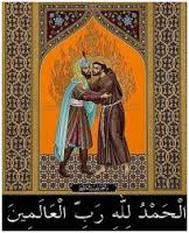 Recent events overseas have increased concern for security in Western countries and sparked incidents which have raised understandable community anxiety. As Christians concerned for the welfare of all our neighbours we consequently therefore continue to pray for all those who are most directly affected by violence or its threat. We remember particularly the peoples of the Middle East at this time, especially those who are persecuted, forced into flight as refugees, injured, killed, or bereaved. We pray for all those in positions of authority and influence who make difficult decisions about violence and security, remembering especially our Prime Minister and Federal Government, military, security and police personnel. May compassion be combined with wisdom, determined courage with insight. As national security levels are raised, let us however also raise our peace and understanding levels. For in the case of Anglicans at least, the current situation certainly calls us back to the 4th Mark of Mission of the Anglican Communion: To seek to transform unjust structures of society, to challenge violence of every kind and to pursue peace and reconciliation.... 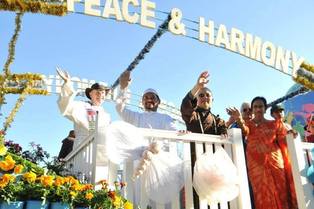 A great Christian (Hans Kung) once said ‘there will not be peace in the world until there is peace between the religions of the world, and there will not be peace between the religions until religious people meet, understand one another, and work together for peace.’ Recent events, especially in the Middle East, show how true this is. Perhaps in the past it was possible for different religions to ignore one another or to compete, sometimes violently. Today, when people of different faith live next door to each another, we need another way... |
AuthorJo Inkpin is an Anglican priest serving as Minister of Pitt St Uniting Church in Sydney, a trans woman, theologian & justice activist. These are some of my reflections on life, spirit, and the search for peace, justice & sustainable creation. Archives
July 2024
Categories
All
|
 RSS Feed
RSS Feed